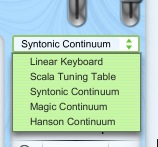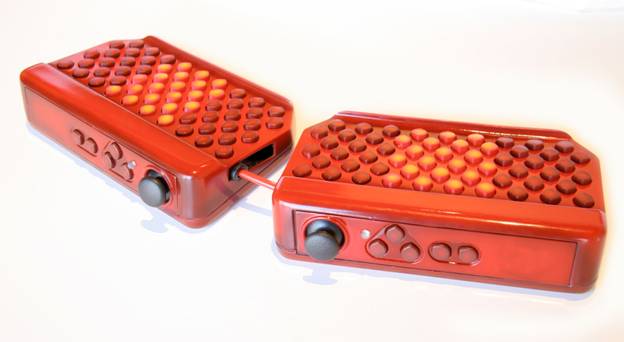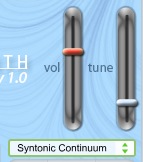

Tuning ContinuaCurrently, there are two kinds of tuning continua: one-dimensional and two-dimensional. Maybe in the future, people will invent three-dimensional keyboard controllers.One-dimensional controllers are most useful for standard piano keyboards and MIDI. Choose either "Linear Keyboard" to easily play in a variety of equal temperaments, or choose "Scala Tuning File" to play in any tuning defined by a .tun file (this allows arbitrary assignment of MIDI notes and pitches to the keys of the keyboard). 

A standard one-dimensional piano keyboard is ideal for equal temperaments and linearly defined scales such as the equal temperaments defined by the linear keyboard selection and tunings defined by Scala's .tun files. Two-dimensional musical keyboards are less common, but they are more versatile because they can be transpositionally invariant (where each interval, chord, and scale type has the same geometric shape in every key) and they can be tuning invariant (where all intervals and chords within a specified set have the same geometric shape in all of the tunings of the continuum). For learning about these, it is easy to use the keyboard of your computer. Hopefully soon there will be more musically-oriented two dimensional keyboards available soon. Choose from the Syntonic, Magic, or Hanson continua, though more will be added in the future. 

For example, this pattern is a major chord (in the Wicki keyboard layout using the syntonic comma). No matter where the pattern is played, it always represents a major chord. Other intervals, chords, and scales are similarly uniform. This is called transpositional invariance. Moreover, because of the flexiblity of the two-dimensional layout, the very same fingering patterns (such as the major chords above) also work for a large number of different tunings: 12-tone equal temperament, Pythagorean, meantone tunings, and others. This is called tuning invariance. The TransFormSynth divides all possible 2-D tuning continua into a number of independent (smaller) tuning continua. Each is named after a particular comma (e.g, Syntonic, Magic, and Hanson) and can be chosen from the little green menu underneath the master volume. 
In summary, a tuning continuum is a parameterized families of tunings where each specific tuning corresponds to a particular value of the parameter. The TransformSynth has several different tuning continua defined by various commas: each has its own unique generators and its own unique set of tunings over which it maintains transpositional and tuning invariance. |
©2008 William Sethares; site design by Anthony Prechtl |